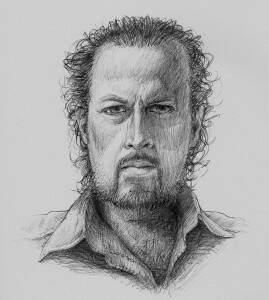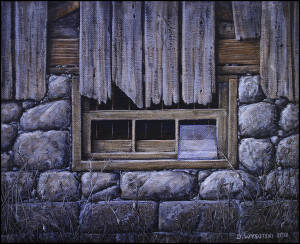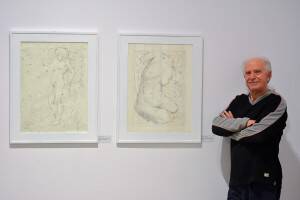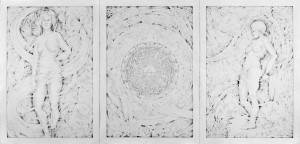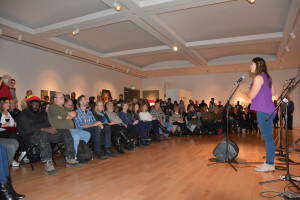David Wysotski is an illustrator and artist painting in both traditional and digital mediums. Last year, Dave taught a drawing/painting class at theRMG which we’ve brought back by popular demand for the third time this season! We thought we’d learn a little more about Dave, his practice, and the value of instructing.
1. Tell us about your artistic practice.
My current artistic practice is fine art based; painting from the heart, painting with meaning, painting what excites me. That focus is a great shift from my career these past few decades where I’ve worked as a natural science illustrator, creating artwork to satisfy client’s needs. As much as I have enjoyed illustrating nature for commercial purposes, I’m excited to have my career transition from illustrator to fine artist.
2. What’s your favourite thing about teaching art?
My favourite thing about teaching art is problem solving. I enjoy the challenge of assessing each student’s works-in-progress and helping them trouble shoot ways to achieve greater results. When I can come up with possible solutions that they may not have considered, I’m rewarded by knowing I’ve helped. I’m also drawn in to the passion and thirst for knowledge that many of my students bring to the classroom. Teaching those that have a desire to learn is what keeps my enthusiasm high.
3. What’s your favourite artwork? Why?
I’ll never be able to choose a single artwork as my favourite as I have way too many favourites! What I can tell you though is that my favourite genre is portraiture. Some favourites would have to include portraits by Rembrandt, Klimt, Bouguereau, Sargeant, Bacon, Vermeer….the list is long. I’m drawn to both realism as well as expressionism. Some of the contemporary portrait artists I’m enjoying lately are successful at combining those differing tight and loose styles. Current artists like Jeremy Mann, Daniel Sprick and Russ Mills excite me for that very reason.
4. What can participants look forward to in your upcoming classes?
My classes include lessons, demonstrations and lots of one on one guidance in a calm, positive atmosphere. Beginner painters can look forward to improving their drawing ability and learning how to work with acrylic paints. Intermediate painters can look forward to gaining new knowledge, skills and techniques. I aim to have my students achieve a recognizable improvement over the duration of my classes. Ultimately, a class that includes learning, laughing, relaxing and creativity makes for a fun evening for all, myself included.
